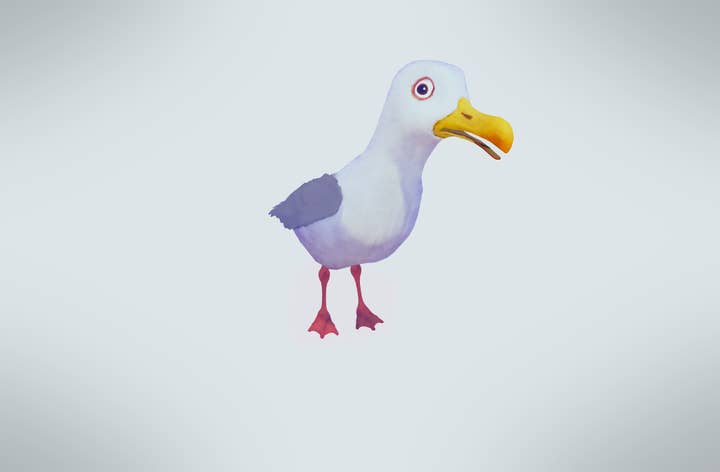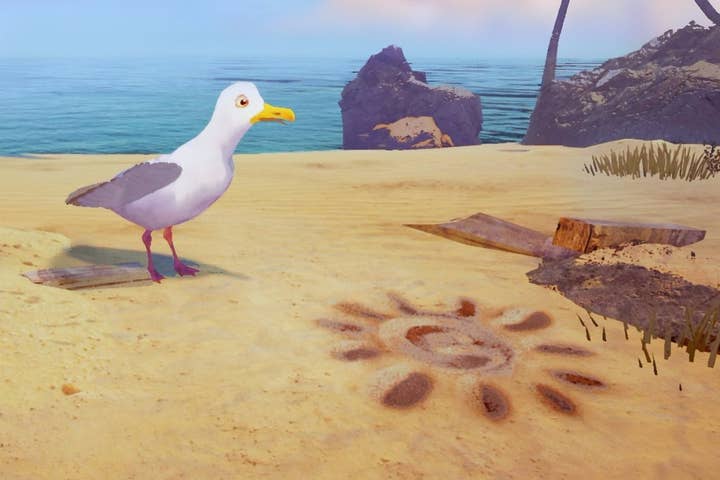Why Gary The Gull is the future of VR
Limitless and Motional prove the potential of emotional connections in the virtual world
I'm sitting in a meeting room, a VR headset flattening my hair, having a conversation with a gull. He's trying to trick me as we chat, and I know that, but I'm going to allow it because I don't want to hurt his feelings. I'm having a relationship with Gary the con-gull, but more than that, I'm beginning to understand the emotional potential of virtual reality experiences.
This emotional awakening is the result of a partnership between two ex-Pixar guys, Tom Sanocki and Mark Walsh. Sanocki is now the founder of Limitless, the technology that acts as (in the simplest terms) an emotion engine for virtual reality. Walsh is the creator of Gary The Gull and the man behind VR content company Motional.
"I got really interested in how to have an interactive, not passive, experience and how to create interaction using the character skills I built at Pixar. The first person I started talking to was Tom because Tom had a similar interest and he comes from a technical background," says Walsh.
"People are the user interface of real life"
"What Tom was able to provide for Motional was this platform that provides voice speech recognition and head nodding and shaking recognition within the game engine."
He's the first client for Limitless, having worked with Sanocki at Pixar, and a great advert for its potential. The two guys clearly care about bringing a unique type of interaction to virtual reality and, together, they can tackle it both creatively and technically. Sanocki is clear on his goals.
"We want to make content creation easy for people. I've done that in my career in studios but we want to bring it to everybody. VR is that perfect medium to bring that kind of entertainment to not just folks who like games, but to folks who like anything where you're engaged in something. To bring story and character and emotional connection."

It's hard to know what to call this new type of virtual reality game or not-game. Experience? Someone paid a lot more than me in an advertising agency is already figuring that out, but these guys have their own descriptions.
"There's a genre here that's not quite game, not quite film, that is storytelling that has beginning, middle and end, that you have influence on but you do not steer completely," says Walsh.
Sanocki compares it to some of the more narrative focused games that have emerged in recent years. "Telltale does a lot of this. We want to take that and increase that emotional engagement by taking those principles and going way further and extending that into VR."
"I got really interested in how to have an interactive, not passive, experience and how to create interaction using the character skills I built at Pixar"
And Gary The Gull, the demo they show me, is a beautiful encapsulation of that aim. He comes to join me on a beach and keeps trying to distract me, telling me to look behind me, in order to steal from my cooler. He makes jokes. He asks if I like Picasso. If I lean too close to him he will fly away, but I don't because I like him. Finally, it's a virtual reality character I can wave at who knows I'm there, rather than a dead eyed NPC who doesn't even notice when I accidentally stumble through their body.
"The philosophy Mark and I have is we need to take our cues from real life and think what's real life like? Because that's the promise of VR. So by taking real life into VR we can achieve that promise, and a lot of that is about people, because people are the user interface of real life. That's what we care about and that's a lot about responding and going on a story, because all our conversations are really mini-stories," says Sanocki.
"We want to be able to empower other people to take this into the directions they want to go. There'll be people who do very scripted stories - you're going to go to Mordor - and there are people that are going to take it and branch it and we can support both. People will figure out more exciting ways to do it. It's going to be the character engagement that's important, and that's what's going to bring VR to the mainstream. The group of people who watch more action movies than play video games."
Walsh and Sanocki both cite Disneyland as an influence. When you interact with someone dressed as Snow White you know there's a script, Snow White isn't going to talk soccer scores, but there's still a feeling of a real connection. That's how it feels hanging out with Gary. I want to hang out with him again, and I can't wait to see what else people do with the Limitless technology. I've seen the future of VR, and it's full of feels.
You can try Gary The Gull for yourself at GDC.


